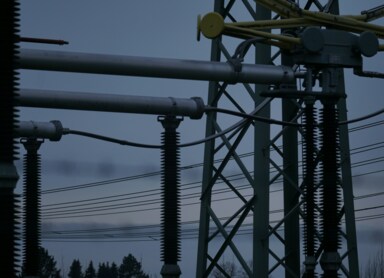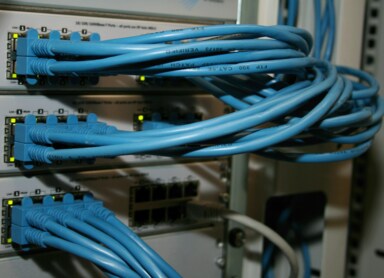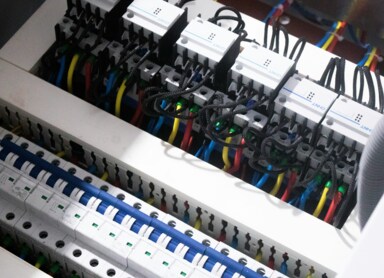How to transfer electricity to a new owner? A practical step-by-step guide
In order to use electricity in a given property, a relevant contract with the energy provider must be signed. When the owner or occupant of the property changes, it is necessary to transfer the electricity meter to the new person. How to transfer the electricity contract quickly and without issues? Check out our guide!
When and Why Is Transferring Electricity to Another Person Necessary?
First, let’s look at the situations where transferring the electricity meter might be required. These typically involve:
- renting or leasing a property,
- selling a property,
- the death of the previous owner and the property’s inheritance by successors.
Although there is no formal obligation to transfer electricity accounts to another person, doing so can prevent many misunderstandings. For the Distribution System Operator (DSO), it doesn’t matter who pays the bills as long as the payments are correct. However, if payments stop, and the parties to a property sale forget to transfer the meter, the payment request could be directed to someone who no longer lives at that address. While this situation is unlikely to result in a court judgment, it is certainly inconvenient and requires explanations that could be avoided by following simple formalities.
In practice, both the property owner and the tenant (or alternatively, the lessee or buyer) should be interested in transferring the electricity account. This ensures there are no unjustified suspicions of electricity theft, and invoices are issued correctly.
Transferring Electricity to Another Person – Key Steps and Required Documents
Several documents are needed to transfer electricity to another person, but the process is not overly complex. Here’s what to prepare:
-
Documents confirming the authorized person’s right to use the property. This could be a rental or lease agreement or a notarized deed of ownership. Alternatively, an excerpt from the land and mortgage register with the buyer’s entry confirmed by the court may suffice.
-
Identity documents of the previous and current owner or occupant of the property, as transfer forms provided by DSOs require the PESEL number.
-
Handover protocol where the parties jointly confirm the meter reading for the specific Point of Delivery (PPE). This protocol requires both parties’ agreement and includes:
- PPE number – an 18-digit code found on the last electricity invoice,
- meter number – located on the meter housing or invoice,
- meter reading – depending on whether the previous user used a single- or dual-rate tariff, appropriate values should be recorded. This is particularly important for businesses, which often select a tariff other than the default one.
The above data helps the DSO identify the agreement. The protocol should also include the date of preparation and signatures from both parties. If a business uses an agent or attorney, they must attach a company registry excerpt (KRS) and a power of attorney authorizing the representative to act on the company’s behalf.
- Meter transfer application form. This is available from every energy supplier’s website, with a consistent information scope despite varying layouts.
The process differs slightly for properties inherited from deceased persons. In such cases, you’ll need their PESEL number and a document confirming inheritance. This could be a court decision on inheritance or a notarized certificate of succession – both are equivalent but mutually exclusive (you can’t obtain both simultaneously).
How to Transfer an Electricity Contract – A Guide for New Property Owners
Imagine your company just purchased a property. After the notary appointment, you wonder what formalities remain. Transferring the electricity account is one of them. How do you do this with popular energy providers?
The traditional approach involves gathering all documentation in paper form and mailing it to the energy supplier’s address. You could also visit a customer service point, although this may involve waiting in line. Fortunately, in most cases, the process can now be completed online.
For example, Tauron offers a fully automated system. Log in to the "Mój Tauron" portal, where the previous user fills out their part of the form, and the new user completes their section via a link they receive. The energy supplier handles the remaining formalities. The process takes just minutes and can be done without leaving your home. Similar conveniences are provided by Energa, PGE, and E.ON, while Enea accepts data submissions through an online form.
Before starting the online meter transfer, check the deadline for submitting the required data. For instance, Tauron allows 14 days for the new user to complete their part of the protocol; otherwise, the process is canceled.
How to Avoid Issues When Transferring Electricity
To prevent misunderstandings or rejection of your application, ensure you accurately provide:
- the name of the agreement party,
- the PESEL numbers of both the outgoing and incoming users,
- the PPE and meter numbers.
Attach the necessary documents confirming your right to use the PPE. When providing meter readings, note the meter type. For older induction meters, report the kilowatt-hours used without leading zeros, while newer electronic meters display readings in full kilowatt-hours. For developer properties, the process is simpler – only the meter number and property address are required. No handover protocol is necessary, as the property has no previous owner.
Electricity Transfer – Common Questions and Answers
Transferring the PPE to a new user can also be a good opportunity to negotiate more favorable contract terms with the current or a new energy supplier or to choose a different tariff, such as a dual-rate tariff instead of a single-rate one. However, check the contract termination conditions in advance. Electricity supplier changes are regulated by the Energy Law Act..1
Transferring the meter involves no interruption to your electricity supply, so you don’t need to worry about energy security.
While the process is simple, there are some pitfalls that could unnecessarily delay or complicate the procedure. If in doubt, don’t hesitate to contact your energy supplier for assistance.
1. https://isap.sejm.gov.pl/isap.nsf/DocDetails.xsp?id=WDU19970540348






